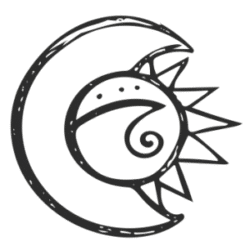10 minute free write (with a little post-time editing); prompt- growth; Feb 12, 2016; When I was a child, I fell a lot. Everyone told me it was from growing so fast; I was the tallest person in my class and my knees and palms were perpetually torn to shreds. Eventually I stopped falling so much but I still walk into things because I misjudge either the size of the doorway or the width of my shoulders. I am forever underestimating my weight in the world, always bumbling around the space I take up. I’ve been sad a lot since…
Witch Woman
Anoint yourself daily. Draw strength from sun and stars, draw strength from soil. Cover every surface with prayers and blessings. Draw strength. From sun and stars learn mantras to ward off maljoe and badmind; cover every surface. With prayers and blessings craft potions for serenity. Learn mantras. Listen for the earth’s lessons, craft potions for serenity, give thanks. Listen first. Anoint yourself daily give thanks always speak love into the world
2016
I enter this year bawling like an infant peeling away dry, numb, skin tender and pink beneath– but feeling.
April 3rd, 2015
I want to give myself to the earth commit to her lessons learn softness and openness generosity and balance when to retreat and when to blossom
Today was a good day, but…
I have not quite burned down this house let’s call it a coat that I have hung up in the summer months a house feels too large and too final a thing and I fear that winter will find mind me and I will be all to ready to drape myself in old sorrows. Day 2- Write a poem that addresses at least one other poem and/or poet by name. You might imitate, parody, disagree with, champion, or generally respond to the other poem and poet. I chose A Good Day by Kait Rokowski
Showing|Learning
For one of my classes in my first semester of college, my final project was to create an installation demonstrating how I learned in the class. Throughout the semester I was perpetually frustrated with the course. It was based in art history, but the art we looked at and the conversations we had remained centred around whiteness. That is a story for another post though. The installation had to include an image of ourselves as learners, objects, and a quote. I have compiled some photographs of this final project, my statement, and audio from my final presentation. Presentation Audio “The…
always in the quiet hours (22 sept 2014)
at night i ask when will i relearn to love myself in the quiet hours
lessons i have yet to learn
(22 July 2014) Things that start with “maybe if I” and end with “then I will feel better’ rarely ever work. Happiness will not come from someone else’s touch there is nothing and noone you can put in your mouth or on your body that can bring you joy.
27 april 2014
self-loathing: i find myself relieved when vile men can still find this expanse of flesh appetizing
24 april 2014
you are not a graceful sleeper but i have learned to love your sprawled sighs when i can’t sleep.
